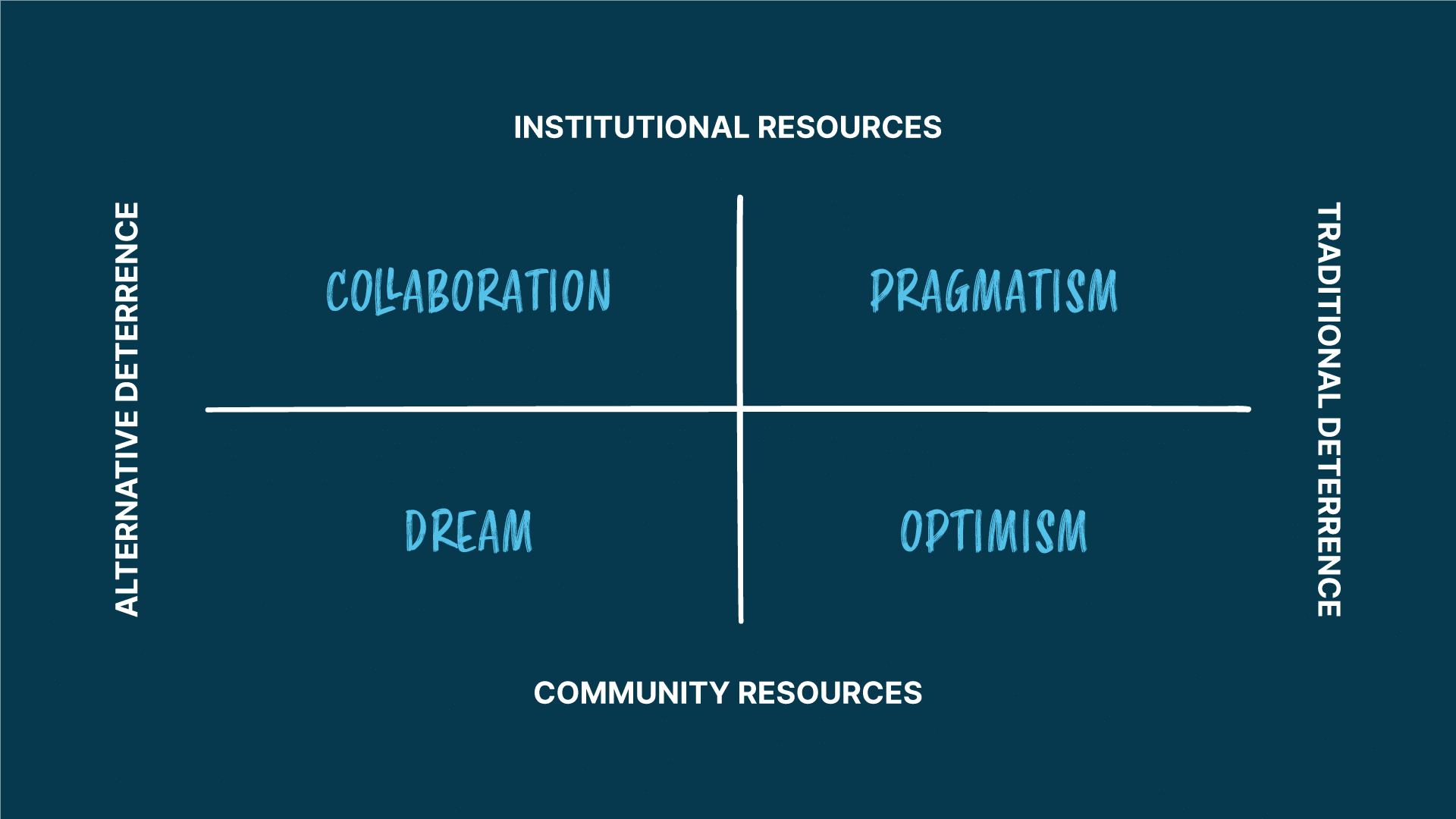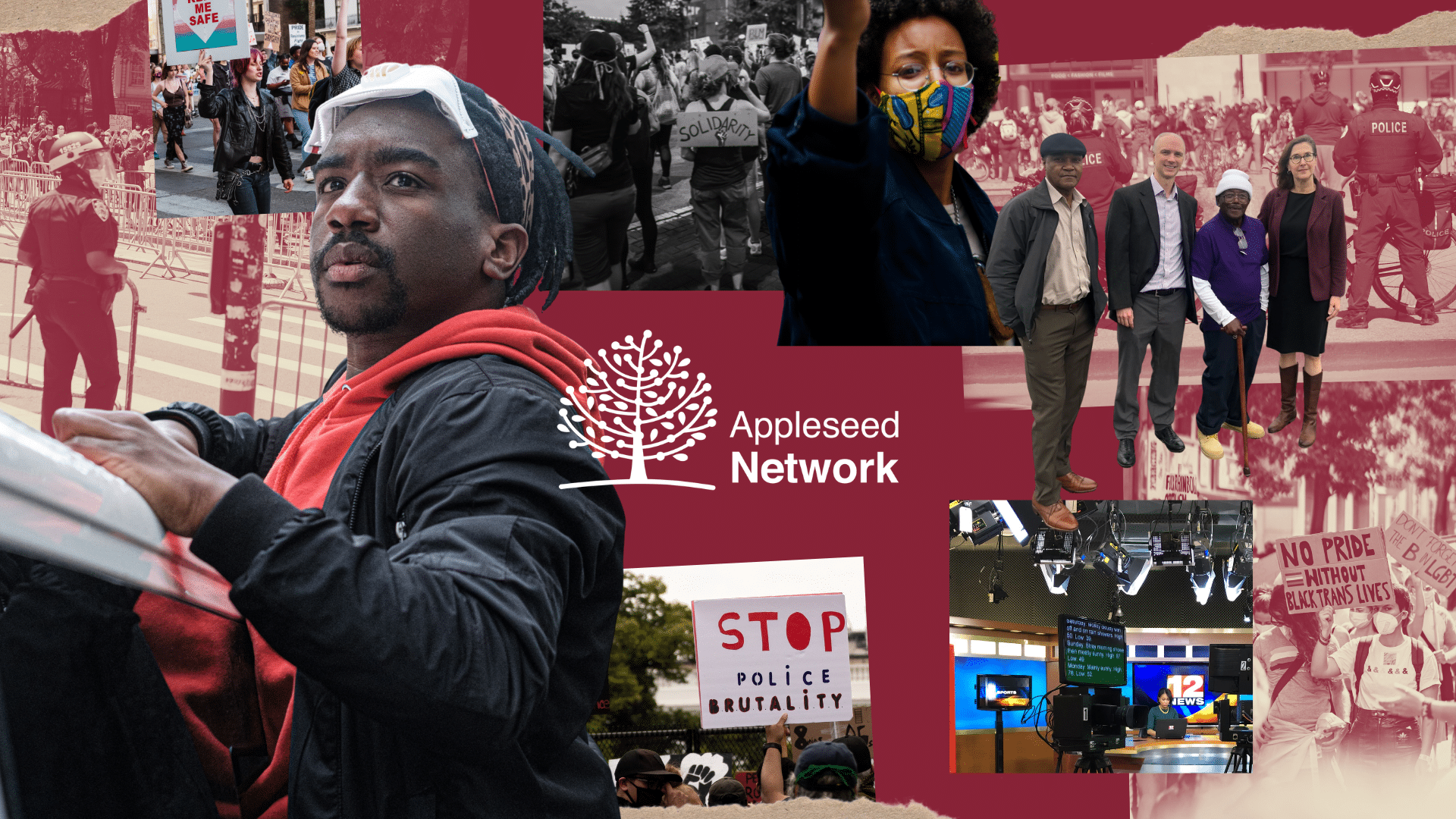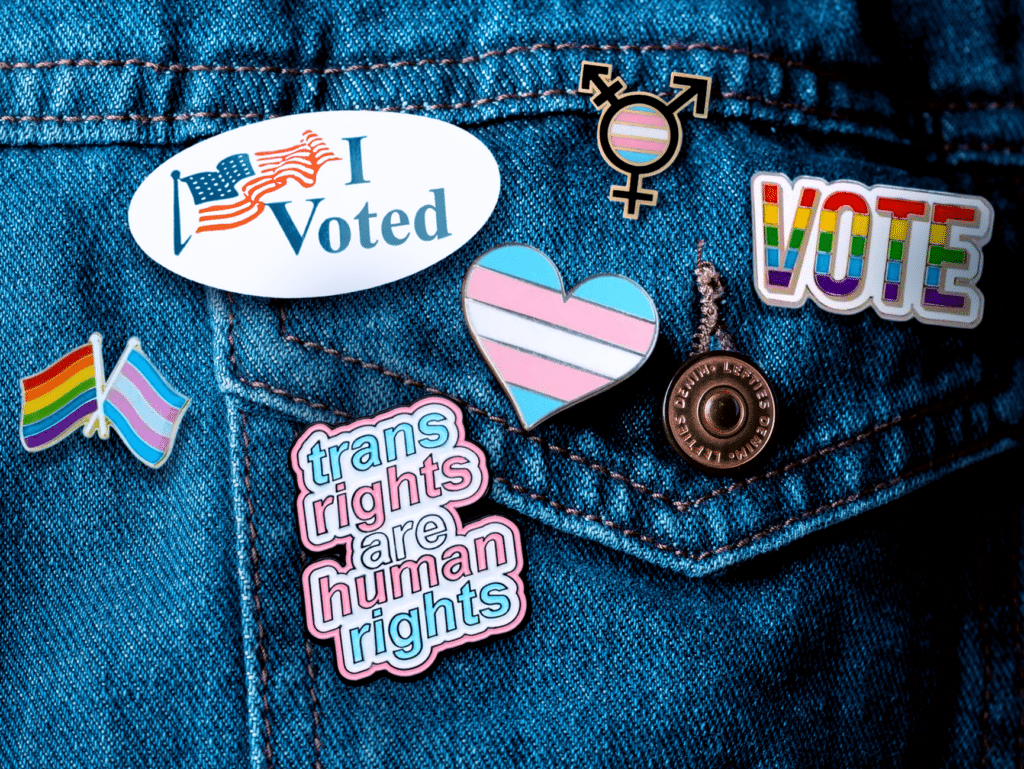When it comes to changing narratives and inspiring broader change, messaging is key. But how do you craft messaging that can work for a network of organizations that operate mostly independently — and in different states and vastly different political environments?
This is exactly what we were challenged to find out.
A project intimidating in scope and scale
For this project, we partnered with the Appleseed Network. True to its name, Appleseed is a network of justice centers across the U.S. that work together to reduce poverty, combat discrimination and advance the rule of law.
The goal of the project was to craft effective messaging on criminal justice and policing reform that could work across state lines and across the political aisle. Many Appleseed Centers operate in conservative states, and a key to their success is their ability to partner with a wide variety of policymakers and stakeholders in these regions that span the ideological spectrum on the topic of crime and justice.
The stage was set. And although there was a long road ahead of us, we were confident that we’d be able to hit the mark.
Background research
 For any sort of messaging to be successful, the first step is always a solid foundation of data and facts. So, we began our partnership with Appleseed by researching the landscape.
For any sort of messaging to be successful, the first step is always a solid foundation of data and facts. So, we began our partnership with Appleseed by researching the landscape.
We started with brushing up on background materials, both from Appleseed and from the broader media landscape. We bolstered this research with listening sessions with Appleseed itself, including with the network as a whole and individual centers. From there, we helped Appleseed facilitate focus groups with policymakers and members of the community.
The research phase of our project culminated in a media landscape analysis. Using sentiment analysis software, we tracked and analyzed how traditional news media and people on social media were speaking about criminal justice and policing reform in the nine states in which the Appleseed Centers operate.
 The result: we learned a lot. For one, people were overwhelmingly negative when speaking about or covering this topic. In the process, we started gleaning insights on various keywords that could resonate with key audiences we want to nudge toward understanding Appleseed’s advocacy work.
The result: we learned a lot. For one, people were overwhelmingly negative when speaking about or covering this topic. In the process, we started gleaning insights on various keywords that could resonate with key audiences we want to nudge toward understanding Appleseed’s advocacy work.
Messages and testing
With this solid foundation wrapped up in a formal Landscape Analysis, we were able to sketch the first draft of messaging that we believed could help Appleseed cut through the noise. Our messaging fell into four different themes, each intended to help individual centers reach specific audiences:
- Optimism: This theme was focused on injecting some positivity into a conversation that has long been plagued by hopelessness and anger.
- Pragmatism: This theme was focused on the practical reasons to reform the criminal justice system — safety, security and saving taxpayer money.
- Collaboration: This theme was focused on bolstering community resources as a deterrent to crime.
- Dream: This theme was for those already in Appleseed’s corner. We used the Dream theme to imagine a criminal justice system that worked for all.
With these messaging themes and sample messages in hand, we worked with a market research agency to test them “in the wild.” Using Appleseed’s own mailing lists, our partner agency measured the emotional resonance of each theme to determine how we can tweak them to be even more effective.
The results challenged some of our assumptions and solidified others. More importantly, we now had real-world data to help refine our messages and guide the rest of our approach.
Choose your own adventure
At this point, we realized that we couldn’t just hand Appleseed some messaging themes and call it a day. Appleseed was an organization staffed by legal experts — not communicators. More than that, some Appleseed centers had little to basically zero communications resources.
In other words, we needed to build capacity.
To that end, we put together a Communications Playbook that incorporated all of our research, messaging themes and more. It included step-by-step instructions on key communications tasks, from sending a press release to planning social posts on an editorial calendar. The goal was to create a prescriptive instruction manual that anyone — even people with no communications experience — could use.
We also realized that the same messaging that would work for Appleseed Chicago might not land with Appleseed Georgia’s audience. As a way to counter this, we opted for a “choose your own adventure” format.
Put simply, we plotted each messaging theme on a pair of axes based on how a specific audience feels about policing, criminal justice, community resources and crime deterrence. Appleseed Centers could quickly identify where their audience fell on this messaging quadrant and apply the right message.
 Because Appleseed Centers varied so much in resources and staffing, we also included a “choose your own adventure” for capacity. We recommended distinct strategies and tactics for low-capacity centers, mid-capacity centers and high-capacity centers.
Because Appleseed Centers varied so much in resources and staffing, we also included a “choose your own adventure” for capacity. We recommended distinct strategies and tactics for low-capacity centers, mid-capacity centers and high-capacity centers.
From there, we held bi-weekly “office hours” to help centers tailor their approach to their own needs and environment, and provided individual support to troubleshoot any issues they were facing. Spoiler alert: Setting up Google Analytics and Google Ads is no small feat — especially for folks without a background in communications.
A new format for flexible and adaptable messaging
 This approach certainly isn’t for every project. However, when there’s a need for flexible messaging that can be adjusted on the fly, we believe it’s a truly effective strategy.
This approach certainly isn’t for every project. However, when there’s a need for flexible messaging that can be adjusted on the fly, we believe it’s a truly effective strategy.
We’ve seen the Appleseed justice centers take these recommendations, messages and resources and really run with them. Although results are still trickling in, some centers have secured news coverage, higher engagement on social and other metrics for success.
By crafting different messaging themes on foundational research, providing a customizable approach and building capacity, we were able to provide each Appleseed Network the tools, messages and resources they needed to break through any barriers that stood in their way.
We feel strongly about providing grassroots networks of all types the tools to fight for equity and justice. If you think so too, or are really curious about the ways messaging that leads to meaningful narrative change can help your own organization, feel free to drop us a line!






